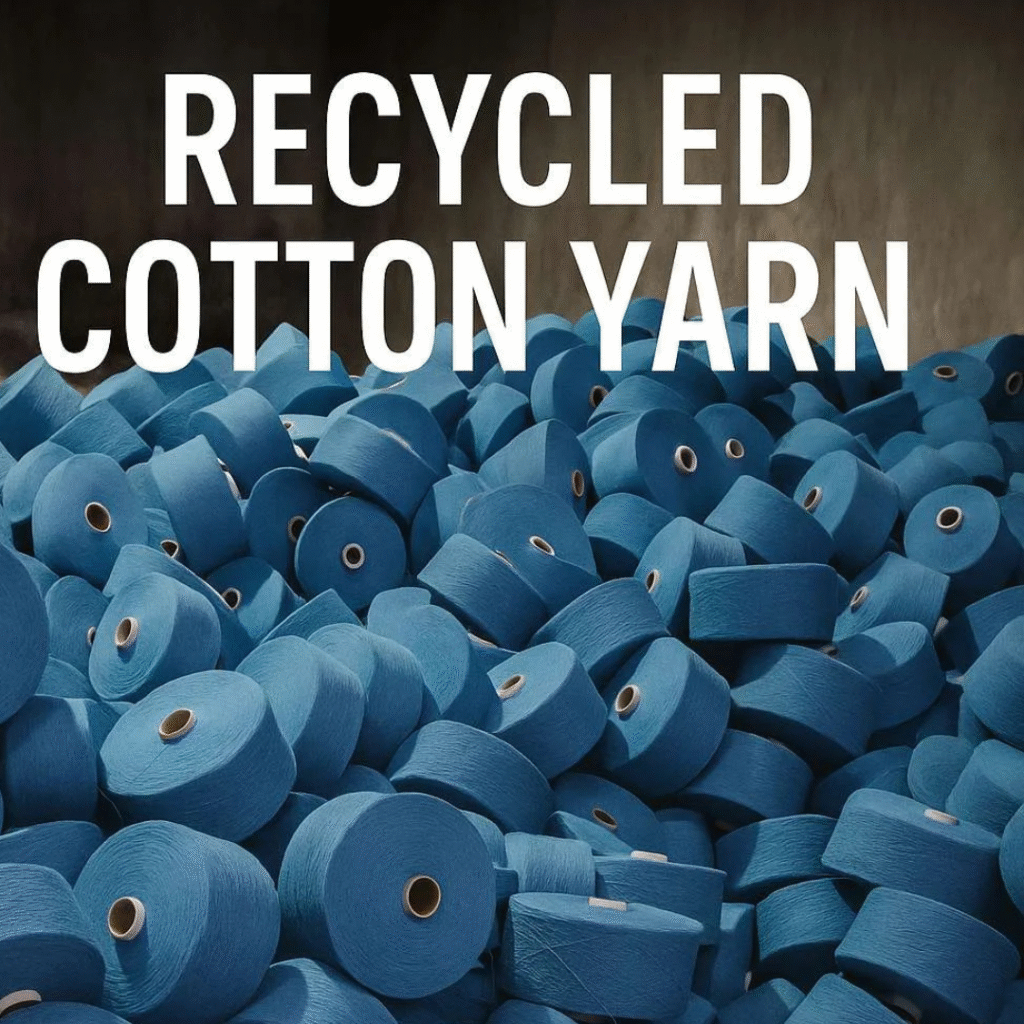
Recycled Cotton Yarn
In a world where fast fashion and textile waste have taken a toll on the environment, recycled cotton yarn stands as a symbol of hope and sustainability. More than just a trend, this eco-friendly material is changing the way clothing, home textiles, and industrial fabrics are made. But what’s the real story behind it? How does waste turn into worth? Let’s dive into the inspiring journeys behind recycled cotton yarn and how recycled cotton yarn manufacturers and suppliers are playing a key role in reshaping the textile industry.
🌱 What is Recycled Cotton Yarn?
Recycled cotton yarn is made by repurposing post-industrial or post-consumer cotton waste — including leftover fabric, old garments, and textile scraps — into new yarn. The process involves collecting, sorting, cleaning, shredding, and spinning these materials into usable fibers that are then transformed into yarn. This not only reduces landfill waste but also minimizes the need for virgin cotton, which demands significant water, land, and chemical resources.
🧵 The Journey: From Textile Waste to Recycled Cotton Yarn
Let’s explore the process and the people behind the transformation of discarded cotton into valuable yarn.
1. The Collection Phase – Where the Journey Begins
In Panipat, a city known as the “Textile Recycling Hub of India,” massive amounts of discarded clothing and textile scraps arrive daily from across the globe. These materials are collected by local recycled cotton yarn suppliers who specialize in sourcing high-quality cotton waste. Workers manually sort the fabrics by color and composition to prepare them for processing.
Real Story: Ravi, a sorting supervisor in a Panipat recycling unit, shares, “We see thousands of garments a day — from jeans to t-shirts. Every piece we save from the landfill feels like a small victory for the planet.”
2. Shredding and Fiber Regeneration
After sorting, the cotton waste is sent to shredding machines that break down the fabrics into smaller fiber fragments. This is a critical step because the quality of the final recycled cotton yarn depends on how effectively the fibers are preserved. Blended or synthetic materials are removed to ensure the yarn remains eco-friendly and durable.
Real Story: At a factory in Tamil Nadu, Meera, a machine operator, proudly explains how the color-sorting of fabrics reduces the need for dyeing. “We sort by color so the yarn comes out pre-colored. It saves a lot of water and chemicals.”
3. Spinning the Yarn – Giving New Life to Old Fabric
Once shredded, the cotton fibers are blended and spun into yarn using open-end or ring-spinning technology. This yarn is then ready to be used in various textile products such as t-shirts, bedsheets, towels, or industrial wipes.
Real Story: One recycled cotton yarn manufacturer based in Gujarat recalls their breakthrough project with a European fashion brand. “They wanted a premium-looking hoodie made entirely from recycled cotton yarn. We customized the blend to meet their quality standards, and it was a massive success.”
🧶 Real Products, Real Impact: What’s Made from Recycled Cotton Yarn?
Here are some inspiring examples of how recycled cotton yarn is being used today:
🧥 Fashion Apparel
Brands around the world are now launching collections made from 100% recycled cotton yarn. From casual wear to denim jackets, these products are not only stylish but also reduce carbon footprint.
Zara, H&M, and Patagonia have all partnered with recycled cotton yarn suppliers in Asia to create sustainable fashion lines.
🏡 Home Textiles
Cushion covers, curtains, and rugs made with recycled cotton yarn offer eco-conscious alternatives for homeowners. These products are especially popular in European markets that prioritize sustainability in decor.
🧽 Industrial Use
Many factories now use recycled yarn for making cleaning cloths, mops, and dusters. These items don’t require high aesthetic quality but are cost-effective and sustainable.
♻️ Why Recycled Cotton Yarn Matters More Than Ever
-
🌍 Reduces Textile Waste: Millions of tons of textile waste are saved from landfills annually.
-
💧 Saves Water: Producing recycled cotton uses far less water than growing new cotton.
-
🚫 Chemical-Free Process: Most recycled yarn is produced without harmful dyes or finishes.
-
🏭 Supports Local Employment: The industry creates jobs in sorting, shredding, spinning, and packaging — particularly in small towns and cities across India.
“We’re not just recycling fabric; we’re recycling lives and opportunities,” says a senior technician at a leading recycled cotton yarn manufacturers.
🌐 How to Find the Right Recycled Cotton Yarn Suppliers
As demand grows, it’s important to choose reliable and certified suppliers. Here’s what to look for:
-
✅ GRS or OEKO-TEX Certification – Ensures sustainability and safety.
-
✅ Quality Control – Fiber length and strength should be checked.
-
✅ Customization Options – Suppliers should offer blends and colors based on your needs.
-
✅ Transparent Supply Chain – The source of cotton waste should be traceable.
💬 Conclusion: Turning Waste Into Wealth — One Thread at a Time
The journey of recycled cotton yarn is more than a technical process — it’s a powerful story of transformation. From factory floors in Panipat to high-fashion runways in Paris, this humble yarn is proving that sustainability and style can go hand in hand.
As recycled cotton yarn manufacturers and suppliers continue to innovate, the future of eco-friendly textiles looks bright. By supporting these efforts, brands, designers, and consumers are becoming part of a global movement — one that turns textile waste into something truly valuable.
🔍 FAQs
Q1: Is recycled cotton yarn as strong as virgin cotton yarn?
A: Recycled cotton yarn is slightly shorter in fiber length but can still be strong when blended properly.
Q2: Can recycled cotton yarn be dyed?
A: Yes, but many suppliers color-sort the waste so additional dyeing isn’t needed — saving water and chemicals.
Q3: Where can I buy recycled cotton yarn in bulk?
A: Many recycled cotton yarn suppliers and manufacturers in India, especially in Panipat and Tamil Nadu, offer bulk solutions with certification.
Q4: What is the cost of recycled cotton yarn compared to virgin yarn?
A: It’s often more affordable and comes with added environmental benefits.
Ready to switch to recycled cotton yarn for your next collection?
Start by connecting with certified recycled cotton yarn suppliers today and contribute to a greener planet — one thread at a time.



